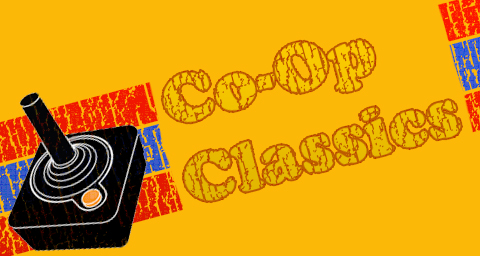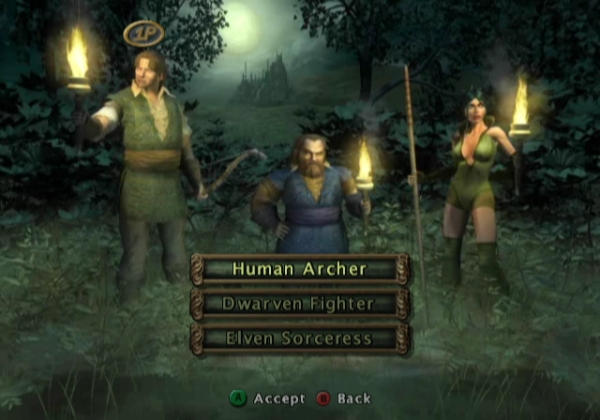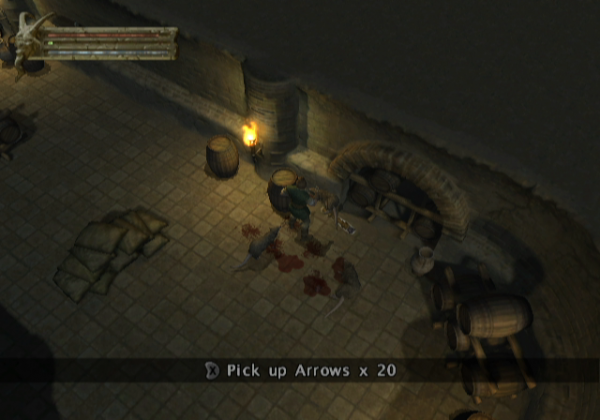

As we've covered recently here at Co-Optimus, there's a new Dungeons & Dragons game coming out soon. D&D Daggerdale will soon bring the classic tabletop game experience to a PC, Xbox 360, or Playstation 3 near you. This has me understandably excited; the D&D brand has provided some excellent video game experiences for years, and one of the finest was the subject of this week's Co-Op Classics: Baldur's Gate Dark Alliance.
As a child of the 80s, and a rather geeky one, at that, I had plenty of experience with Dungeons & Dragons growing up. The Saturday morning cartoon, Dragonlance books and eventually a massive D&D game book collection had a big influence on me. As D&D's popularity grew, it became translated into video game form, time and time again. It turns out that the same elements that make the pen and paper game so enjoyable work together to make great video games, too. An entire article could be written about the history of D&D video games, ranging from the venerable Pools of Radiance series to the excellent Capcom brawlers to Planescape: Torment. But today, we'll focus on one series in particular, a console spinoff of the very popular Baldur's Gate PC series.

The original Baldur's Gate was released in 1998, and it was an immense success. Set in the Forgotten Realms, a well-established fantasy world, the game boasted stellar gameplay, graphics, and a compelling storyline. A long line of sequels and offshoots, including the Icewind Dale games, followed. As the 90s rolled over into the new milennium, a new generation of home consoles spawned. The Playstation 2, original Xbox, and Nintendo's Gamecube all provided new platforms for games, and an action-oriented spinoff with the Baldur's Gate title seemed like a surefire hit. And, for fans of a good old fashioned dungeon crawl, it most certainly was.
Baldur's Gate Dark Alliance appears, on the surface, to be a Diablo clone. And indeed, there are many similarities to Blizzard's fantasy masterpiece. Third person perspective, a limited selection of classes, and plenty of hacking and slashing all mirror the Diablo experience. However, a story set firmly in the Baldur's Gate world, already familiar to many gamers, as well as the D&D paradigms of "+5 elven leather armor" and "+3 flaming longswords of wounding" tweaked the action/RPG hybrid genre enough to feel fresh and new.

Another major appeal of Baldur's Gate Dark Alliance was the graphics. Sony's Playstation 2 had been released in late 2000, and the Gamecube and Xbox followed in 2001. Dark Alliance was one of the most graphically appealing of any of the games that had been released on those consoles at that early point in their history. The lighting, textures, and especially the effects of the magical spells and items in the game were astonishing, and still look impressive almost a decade later. This was the game you played to show your friends how awesome your new game console was.
While Dark Alliance didn't have the truly epic storyline of it's PC progenitors, the tale was still enjoyable. A young hero, robbed and left for dead, recovers and helps clear rats from the cellar of a tavern. This leads to a den of thieves, a gloomy sewer, and an ancient crypt. Eventually, a dwarven mountain stronghold, a temple filled with minotaurs, and finally the Onyx Tower itself all provide interesting places in which to launch arrows, swing axes, and cast lightning bolts at nearly limitless hordes of enemies. Sure, it's not classic literature, but you don't care, because you're having too much fun slaying and looting.
Of course, the single greatest feature of Baldur's Gate Dark Alliance was co-op. Two players could work together, sharing the same screen and making sure to cover each other's back. As is always the case, the fun factor multiplies greatly when you've got a buddy along for the ride. Deciding on the best strategies to defeat the bosses and dividing up the loot drops for maximum effectiveness were just two ways that cooperation and teamwork made the entire heroic experience that much smoother and more enjoyable.
Like it's PC namesake, Baldur's Gate Dark Alliance was followed by a sequel, the impeccably named Baldur's Gate Dark Alliance II, which was released in 2004. Since then, Dungeons & Dragons has been, for the most part, absent from home consoles, though the Neverwinter Nights games and D&D Online keep the brand going on PC. To say that seven years is a long time to wait for a spiritual successor to Dark Alliance is a bit of an understatement. In just a few months, we'll be grabbing those +3 daggers and +2 shields once again in D&D Daggerdale. Let's hope the latest D&D game lives up to the heritage that Dark Alliance and its sequel left behind!